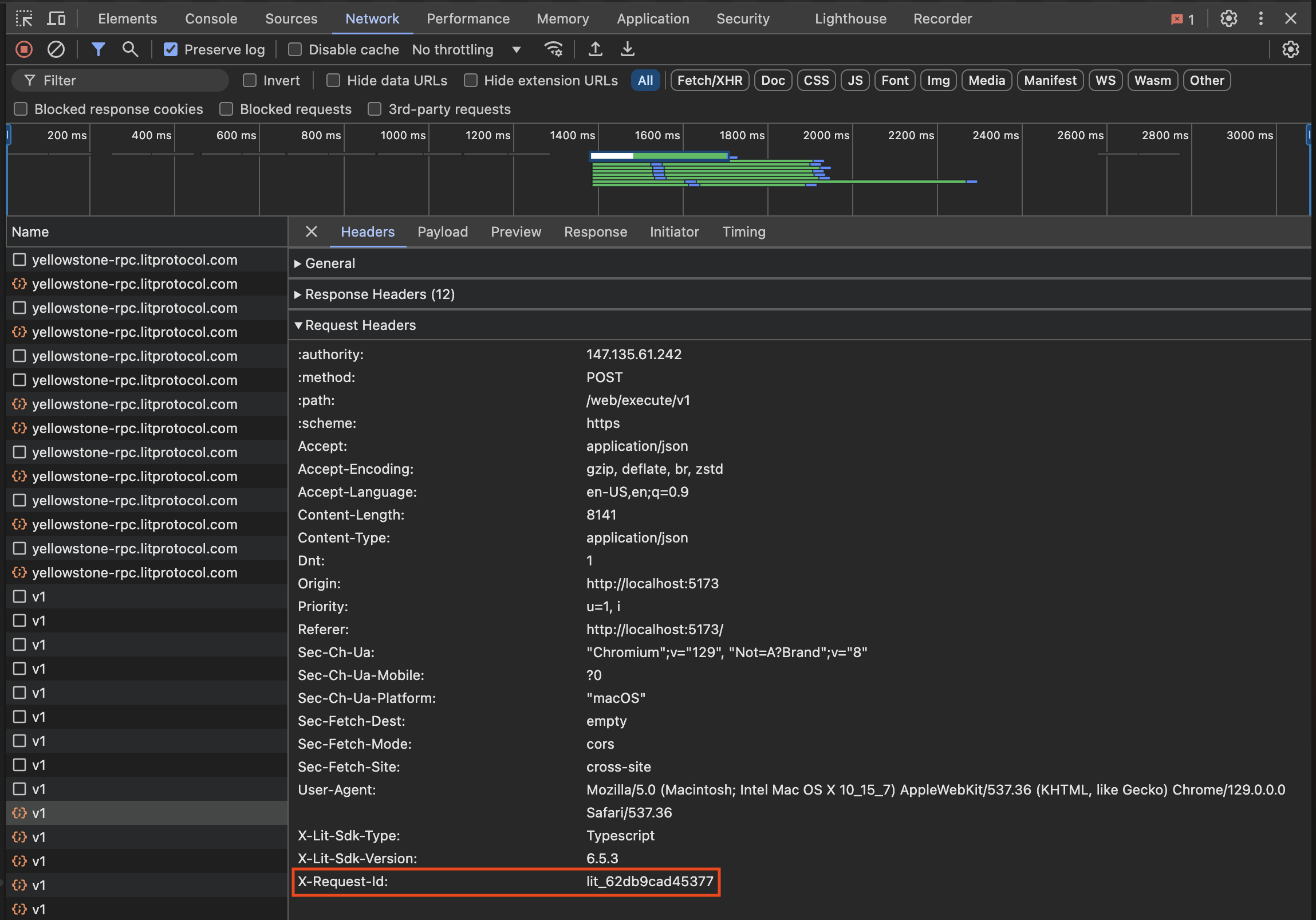Connecting to Lit
The LitNodeClient is used to connect your session to the Lit network. After initializing a LitNodeClient instance, you can use the connect() method to establish a connection.
When initializing a LitNodeClient instance, you must provide a litNetwork.
import { LitNodeClient } from '@lit-protocol/lit-node-client';
import { LIT_NETWORK } from '@lit-protocol/constants';
const litNodeClient = new LitNodeClient({
litNetwork: LIT_NETWORK.DatilDev,
debug: false,
});
await litNodeClient.connect();
LIT_NETWORK Constant
The LIT_NETWORK constant contains the past and present Lit networks. The constant is imported from the @lit-protocol/constants package. The current networks in the constant can be found here.
LitNodeClient Flags
You have the option to pass flags to the LitNodeClient instance. These flags are used to configure the Lit network connection. You can find a complete list of flags in the LitNodeClient Config. In this guide we will cover the most common flags: debug and storageProvider.
debug
The debug flag is used to enable or disable debug logging. When enabled, debug logs will be written to the console. This flag will only provide debug logs when executing in a Node.js environment. In a browser environment, the debug flag will be ignored.
storageProvider
The storageProvider flag is used to configure the storage provider used by the Lit network. When provided, the Session Keypair will be stored in the provided storage.
If not provided, a new Session Keypair will be generated each time the LitNodeClient is initialized.
In a browser environment, the storageProvider flag will be ignored, and the Session Keypair will be stored in the browser's local storage. To clear the cached Session Keypair, you can use the disconnectWeb3 function (imported from the @lit-protocol/auth-browser package) like so:
import { LitNodeClient } from '@lit-protocol/lit-node-client';
import { LIT_NETWORK } from '@lit-protocol/constants';
import { disconnectWeb3 } from "@lit-protocol/auth-browser";
let litNodeClient;
try {
litNodeClient = new LitNodeClient({
litNetwork: LIT_NETWORK.DatilDev,
debug: false,
});
await litNodeClient.connect();
} catch (error) {
// handle errors
} finally {
disconnectWeb3(); // <--- When this function call is executed,
// the Session Keypair will be deleted from the browser's local storage
litNodeClient.disconnect(); // <--- Here we disconnect from the Lit network
}
Disconnecting from the Lit Network
To disconnect from the Lit network, you can use the disconnect() method on the LitNodeClient instance (as shown in the example above). This detaches Lit's listeners for contract changes and stops network polling.
Additional Support
If you encounter any issues, providing the Lit team with your Lit request ID can help us resolve the problem faster.
Node.js Environment
In a Node.js environment, the request ID will be logged to the console when an error occurs. If this is not the case, you can enable debug logging by setting the debug flag to true in the LitNodeClient instance; the request ID will then be logged to the console.
The following is an example log from LitNodeClient when debug was set to true:
[Lit-JS-SDK v6.8.1] [2024-10-12T02:45:37.100Z] [DEBUG] [core] [id: a1eefc564ff6b] executeJs responseData from node
[id: a1eefc564ff6b] is the Lit request ID that you should provide to the Lit team when making a support request.
Browser Environment
In a browser environment, the request ID will be logged to the console when an error occurs. If not, you can find the error in the Network tab of your browser's developer tools; scrolling to the bottom of the page will show the request ID.
The following is an example of a response to a request made using LitNodeClient in the browser:

lit_62db9cad45377 is the Lit request ID that you should provide to the Lit team when making a support request.
API Reference
To learn more about LitNodeClient properties and methods, visit the API Reference Docs.
Code Example
A short code example of connecting to the Lit network with a LitNodeClient instance can be found in our developer guides repo here. There are examples for both Node.js and the browser.